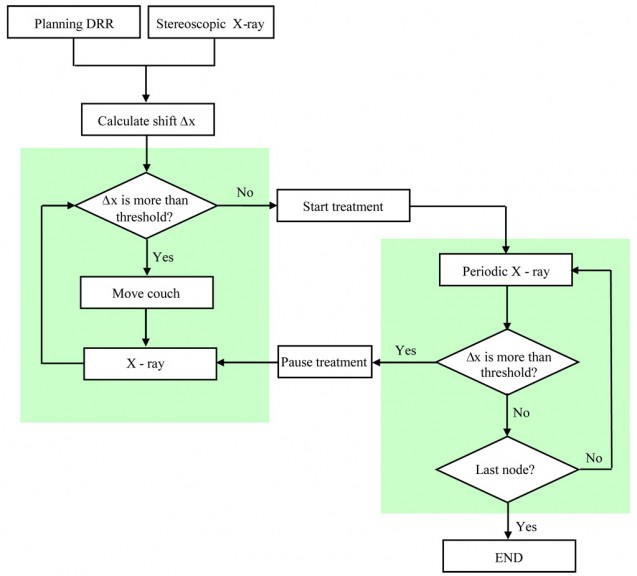The New England Journal of Medicine recently published the results of a landmark Scandinavian study that showed men who undergo radical surgery upon diagnosis are less likely to die from their disease than those men whose condition is addressed with “watchful waiting.”
The problem, experts note, is the men in the study, which was conducted in partnership with the Harvard School of Public Health, who were part of the watchful waiting group did not receive any treatment designed to cure their prostate cancer, regardless of how their cancer progressed. In essence, the researchers proved surgical treatment for prostate cancer is more effective than no treatment at all, but they did not account for the fact a prostatectomy may not be the best first course of action in all patients.
What Does “Watchful Waiting” Really Mean?
When you were a child and came down with a fever, chances are your parents called the pediatrician, who most likely recommended keeping an eye on your temperature and any other symptoms. If things changed dramatically, the pediatrician recommended your parents then schedule an appointment. In the meantime, your parents would most likely be directed to keep you comfortable and take steps to reduce your fever as much as possible.
The same general principle applies in “watchful waiting” in prostate cancer. Rather than immediately scheduling surgery, which comes with certain risks, patients who have smaller or less aggressive tumors may wait to seek treatment. Prostate cancer tends to develop slowly; if it is not progressing rapidly, the patient has time to consider all treatment options.
Watchful waiting does not mean a patient receives a cancer diagnosis and is sent on his way only to return a year later for a checkup. Some doctors refer to watchful waiting as “active surveillance,” in which the patient undergoes regular exams, blood tests to check PSA levels and biopsies to gauge the progression of the cancer and determine an appropriate course of action. If things change drastically, it’s time to take more aggressive action.
Watchful Waiting Is Not for Everyone
The idea of “watchful waiting” as a plan for prostate cancer isn’t right for everyone. In general, it’s best for patients who have few or no symptoms, a small tumor that is confined to the prostate or expected to grow slowly. If the cancer is fast growing or has already spread, or if the patient is younger (i.e., under age 30) then more aggressive, immediate treatment is usually the best option. Only you and your health care provider can determine the best course of action for your situation.
One of the benefits of watchful waiting is it allows you the chance to explore your treatment options and choose the one that works best for you. We recommend talking with your specialist at the Pasadena CyberKnife Center and scheduling consultations with various treatment providers to learn the risks and benefits of all treatment options, including surgery and radiation. Depending on your case, one method may be more effective than another, and you need to arm yourself with as much information as possible to make the best decision for yourself and your health.
More
Receiving a cancer diagnosis is one of the most frightening experiences anyone can have. It’s often difficult to process the news without immediately pondering your mortality — even if you’re diagnosed with prostate cancer, which when treated appropriately, has a five-year survival rate of nearly 100 percent.
Everyone handles the news of a cancer diagnosis differently, but regardless of your coping mechanisms, we recommend everyone take certain steps to make this difficult and potentially confusing period easier.
Get a Second Opinion
Even if you are completely confident in your doctor and his or her diagnostic abilities, always seek a second opinion. A second physician may well corroborate the diagnosis, or he or she could notice something your doctor overlooked, or have a different interpretation of the results. Getting another perspective will help you feel more confident in your course of treatment and that you are well informed.
Explore Your Treatment Options
When you have prostate cancer, you have a number of cancer treatment options. Your doctor may recommend a course of action, but do some research and ask questions to determine all of your options so you can make an informed choice. We recommend using caution when using the Internet for research. Your case is unique, and just because someone else had a particular experience with a treatment plan does not mean your results will be the same. Use your research as a springboard for conversations with your health care team at the Pasadena CyberKnife Center.
Build a Support System
We met some patients who are reluctant to keep friends and family in the loop about their diagnosis for fear of unnecessarily worrying or burdening them. However, your loved ones can be a good source of help and support during your treatment; in fact, studies show those patients who have a good support system often have better outcomes than those who do not.
Make Lifestyle Changes
Successfully overcoming prostate cancer means maintaining overall good health. Your treatment will also be more effective if you are healthy and strong to begin with. After your diagnosis, make staying healthy a priority by eating a healthy diet rich in fruits and vegetables, lean protein and whole grains, getting plenty of sleep, exercising and reducing stress. Your doctor will work with you to identify other lifestyle changes that will help keep you in good health during and after treatment.
Ask Questions and Take Notes
A cancer diagnosis is a life-changing event, and no one expects you will understand every aspect of your disease and treatment plan. Don’t be afraid to ask questions, no matter how silly or inconsequential you believe them to be. This is your life and your body, and you have a right to be informed. Take notes during your conversations with health care providers, and jot down questions when you think of them. By asking questions and staying informed, you will feel more in control of your condition and your recovery.
When you receive your cancer diagnosis, your health care provider will most likely direct you toward resources to help you understand and cope with your condition. Take advantage of those resources and follow these steps, and it won’t be long before your prostate cancer will be something that happened in the past. Contact us today to schedule a consult with one of our team specialists.
More
Abstract
The management of pancreatic cancer continues to be challenging. Despite surgical, genetic and molecular advances, its overall prognosis remains poor. Surgical resection is the only modality that offers a chance for a cure, with an overall survival rate of 10–20% at 5 years. However, only 20% of the patients are surgical candidates because of locally advanced disease or systemic stage at presentation. Conventional radiotherapy, with or without chemotherapy, has been used to treat patients with advanced-stage pancreatic cancer, an approach with high rates of local recurrence. Stereotactic body radiation therapy, also known as stereotactic ablative radiotherapy has emerged as a treatment modality that allows the precise delivery of a large ablative radiation dose to a tumor volume while sparing surrounding organs and tissues. Phase I and II studies have shown good rates of local control of the disease but rates of distant metastasis remain significant. Strategies to combine novel systemic therapy and stereotactic body radiation therapy are to be explored.
Click here to read the full article (you must have a MedScape account).
More
The following is a White Paper on CyberKnife’s ability to treat Lung Metastases.
White Paper Cyberknife for Lung Metastases
More
The following study shows the importance of real-time image guidance and robotic motion-compensation techniques used in CyberKnife.
Purpose
To report the characteristics of prostate motion as tracked by the stereoscopic X-ray images of the implanted fiducials during hypofractionated radiotherapy with CyberKnife.
Methods and Materials
Twenty one patients with prostate cancer who were treated with CyberKnife between January 2005 and September 2007 were selected for this retrospective study. The CyberKnife uses a stereoscopic X-ray system to obtain the position of the prostate target through the monitoring of implanted gold fiducial markers. If there is a significant deviation, the treatment is paused while the patient is repositioned by moving the couch. The deviations calculated from X-ray images acquired within the time interval between two consecutive couch motions constitute a data set.
Results
A total of 427 data sets and 4439 time stamps of X-ray images were analyzed. The mean duration for each data set is 697 s. At 30 s, a motion larger than 2 mm exists in about 5% of data sets. The percentage is increased to 8%, 11%, and 14% at 60 s, 90 s, and 120 s, respectively. A similar trend exists for other values of prostate motion.
Conclusions
With proper monitoring and intervention during treatment, the prostate shifts observed among the patients can be kept within the tracking range of the CyberKnife. On average a sampling rate of ~40 s between consecutive X-rays is acceptable to ensure sub-millimeter tracking. However, there is significant movement variation among patients and higher sampling rate may be necessary in some patients.
More



